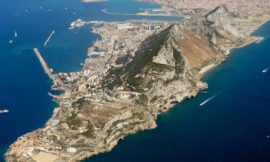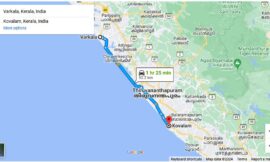The journey from Gorakhpur to Delhi is a passage through the heartland of northern India, traversing diverse landscapes, bustling cities, and historic landmarks. As travelers embark on this voyage, they are immersed in the vibrant tapestry of culture, history, and tradition that defines the region.
Leaving behind the bustling streets of Gorakhpur, with its bustling markets and lively atmosphere, travelers set forth on a journey that takes them through the fertile plains of the Gangetic basin. The landscape is dominated by vast expanses of farmland, where fields of wheat, rice, and sugarcane stretch out as far as the eye can see. Villages dot the countryside, their whitewashed houses and colorful temples standing in stark contrast to the surrounding greenery.
As the road stretches out ahead, travelers pass through towns and cities that bear witness to the rich tapestry of Indian history. In Faizabad, they catch a glimpse of the majestic architecture of the Mughal era, with its grand mosques and imposing forts. Nearby Ayodhya, the birthplace of Lord Rama, is steeped in mythology and legend, its ancient temples and sacred sites drawing pilgrims from far and wide.
Continuing on their journey, travelers cross the mighty Ganges River, its sacred waters flowing through the heart of northern India. The river is a lifeline for millions of people, providing irrigation for crops, transportation for goods, and spiritual nourishment for the soul.
As the journey progresses, the landscape gradually changes, giving way to the urban sprawl of Uttar Pradesh’s capital, Lucknow. The city is a bustling metropolis, its streets teeming with activity and its skyline dominated by towering minarets and domes. Known as the “City of Nawabs,” Lucknow is famed for its rich culinary heritage, with its kebabs, biryanis, and sweets drawing food lovers from far and wide.
From Lucknow, the road stretches out towards the Indian capital of Delhi, a sprawling megacity that serves as the political, cultural, and economic heart of the nation. As travelers approach the city, they are greeted by the sight of its iconic landmarks, from the majestic Red Fort to the towering Qutub Minar.
Delhi is a city of contrasts, where ancient monuments stand side by side with modern skyscrapers, and bustling bazaars coexist with upscale shopping malls. The bustling streets are a cacophony of sights and sounds, with rickshaws, cars, and pedestrians jostling for space amidst the chaos of urban life.
In Old Delhi, travelers can explore the narrow lanes of Chandni Chowk, a bustling market where vendors sell everything from spices and textiles to jewelry and electronics. Nearby, the Jama Masjid, one of the largest mosques in India, offers a serene oasis of calm amidst the hustle and bustle of the city.
In New Delhi, travelers can explore the grand avenues and stately buildings that date back to the British colonial era. The India Gate, a towering war memorial, stands as a poignant reminder of the sacrifices made by Indian soldiers in conflicts around the world.
As the journey from Gorakhpur to Delhi draws to a close, travelers are left with a sense of awe and wonder at the rich tapestry of history and culture that they have experienced along the way. From the fertile plains of Uttar Pradesh to the bustling streets of Delhi, each step of the journey has been a testament to the resilience and vitality of the Indian spirit.



